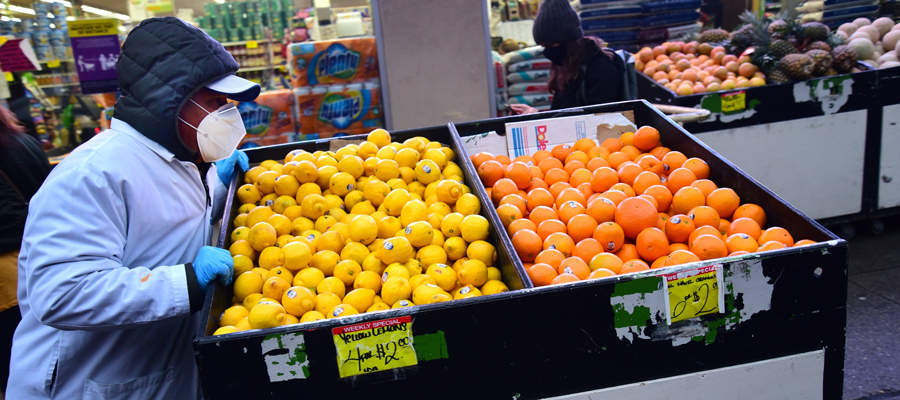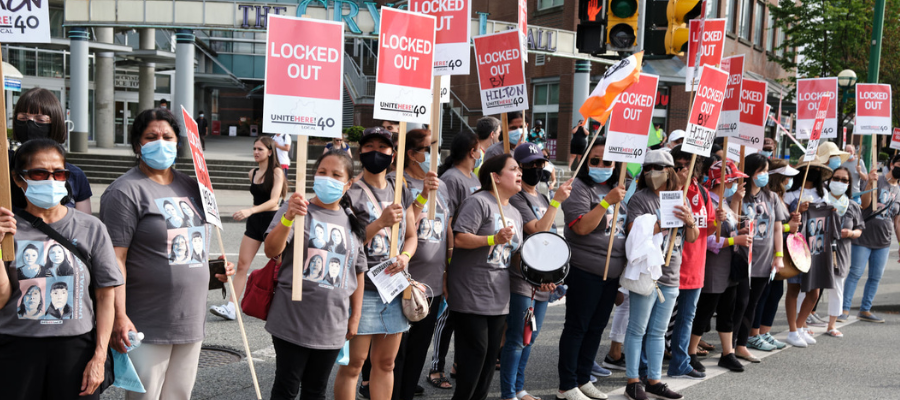COVID-19 pandemic highlights the need for a living wage

With the spread of the Omicron variant of COVID-19, news stories sounding the alarm over worker shortages are once again on the rise. And, like previous waves, these news stories are focused almost exclusively on workers in low-wage, precarious jobs. These jobs service large parts of the Canadian economy that are now being recognized as “essential” in a post-pandemic society; jobs in the food supply and distribution chain, especially.
Precarious jobs tend to be characterized by part-time or casual labour, low wages, and few benefits and job protections. This includes many jobs in service sectors like retail, restaurant and food services, among others.
The first year and a half of the pandemic, in addition to recognizing the essential nature of many precarious jobs, also saw advancements for these workers in relation to job protection and sick leave. Many provinces amended employment statutes to ensure that all workers could take some form of unpaid sick leave and protected them against termination for doing so. Some, such as BC, have gone further to extend at least some entitlement to paid sick leave for these workers, as well.
Precarious jobs tend to be characterized by part-time or casual labour.
The past two years of the pandemic has also highlighted numerous other issues and concerns for precarious workers, and the resulting labour shortages that have plagued service and food supply employers have not only been limited to periods of high COVID caseloads. More workers have left these industries and fewer workers have entered them. The reasons for this are well-rehearsed: lack of stability and job security, few benefits, and most often at the top of the list, insufficient wages.
For example, an individual working as a grocery store clerk in Vancouver and making minimum wage would gross just over $600 per week, or $2400 per month, working 40 hours per week. In light of the cost of rent, food and other essentials in Vancouver, this is not enough to make ends meet each month. Staying home from work when sick would be a difficult choice to make if the illness extended beyond BC’s now-mandatory five days employer-paid sick leave (or if they get sick more than once in a year). And, the ability to cope with a gap in pay if the workplace was shut down would likely be insurmountable.
The pandemic has both illustrated and spurred on a demonstrated need for a living wage. A living wage is one that allows a household to “meet its basic needs”. It is more than minimum wage. In Metro Vancouver, the calculated living wage for 2021 is $20.52 while the minimum wage is $15.20. And the cost of many essential goods has continued to rise since the calculation was done last year, due in part to the pandemic and its associated consequences. In 2022, for example, the cost of gas and basic groceries like milk is predicted to rise well above historical averages of inflation.
Many precarious jobs have typically paid at or near the minimum wage, with no attending benefits. However, for employers facing serious labour shortages, a living wage may be an attractive enticement for workers to enter and stay in these industries.
The pandemic has both illustrated and spurred on a demonstrated need for a living wage.
Since the onset of the pandemic, some employers in food services, especially, have taken a step in this direction, offering higher than minimum wages and other benefits. Others long ago took an even greater step by becoming a “living wage employer” in BC. And in unionized workplaces, achieving decent pay and working conditions, beyond the legislated minimum, is a matter of collective action and rights. In fact, since the onset of the COVID-19 pandemic, more people in precarious jobs and under-represented industries in BC, like retail, cafes and food services, have started to unionize as a means to increase their wages and working conditions.
The recognition that many precarious jobs—especially those in the food supply and distribution chains— are essential to the functioning of our economy and society should also be a top priority for employers and policy makers alike. Movement from a minimum wage to a living wage by individual employers is a good start and may help stave off the prospect of business closure amidst growing labour shortages. Legislated changes to move from a minimum wage to living-wage model under employment law would help ensure that all workers can have a measure of economic security in the long run.

Topics: COVID-19, Employment & labour, Poverty, inequality & welfare, UP–BC


